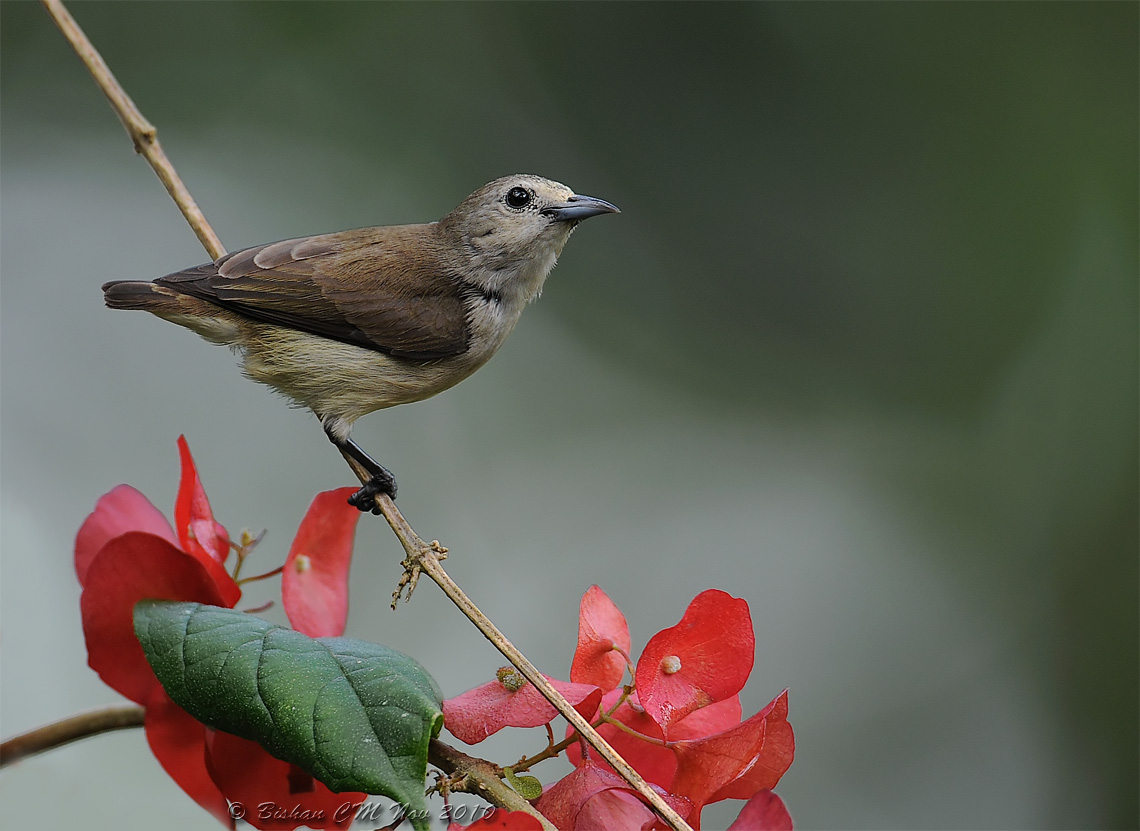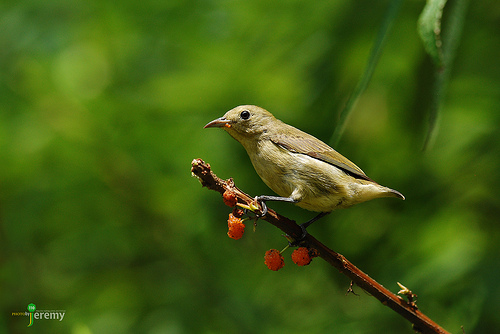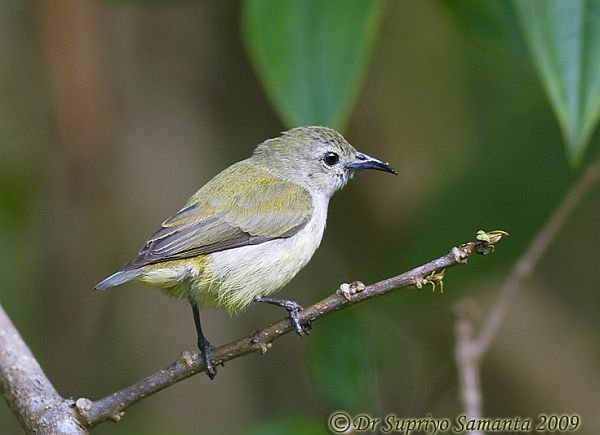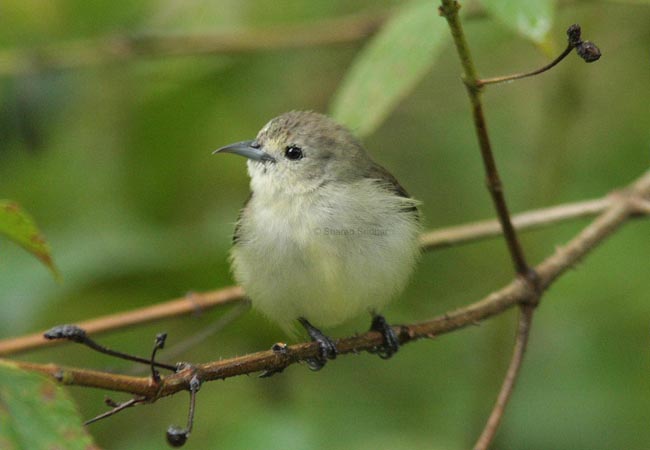
Dicaeum concolor
TAXONOMY
Dicaeum concolor Jerdon, 1840, Malabar coast, India. Seven subspecies.
OTHER COMMON NAMES
French: Dicйe concolore; German: Einfarbmistelfresser; Spanish:
Pica Flor Descolorido.
PHYSICAL CHARACTERISTICS
3.3 in (8.4 cm); 0.14–0.28 oz (4–8 g). Drab in appearance with
buff breast and belly and darker upperparts.
DISTRIBUTION
D. c. borneanum: Malaysia, Borneo, and Sumatra; D. c. concolor:
southwest India; D. c. minullum: Hainan Island; D. c. olivaceum:
India, Myanmar, China, Thailand, northern Malaysia; D. c. sollicitans:
Bali and Java; D. c. uchidai: Taiwan; D. c. virescens: Middle
and southern Andaman Islands.
HABITAT
Forests, secondary growth, open areas, and plantations, from
sea-level to 11,800 ft (3,600 m).
BEHAVIOR
Restless, usually seen singly in treetops, but also forages
down low.
FEEDING ECOLOGY AND DIET
Heavily dependent on mistletoes for berries and nectar, but
also eats insects and spiders.
REPRODUCTIVE BIOLOGY
Nest is a small purse of down and fibers suspended 3.3–39 ft
(1–12 m) up in a tree, bush, or low growth, in which are laid
two or three white eggs from January–September. Male and
female are involved in nest-building, incubation, and rearing
of young.
CONSERVATION STATUS
Not threatened. Common in most of its range.
SIGNIFICANCE TO HUMANS
Spreads mistletoes.
Photo Gallery of - Plain flowerpecker




 Animalia Life
Animalia Life